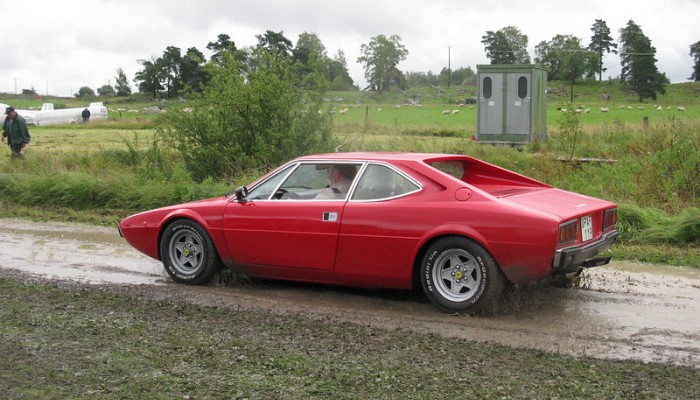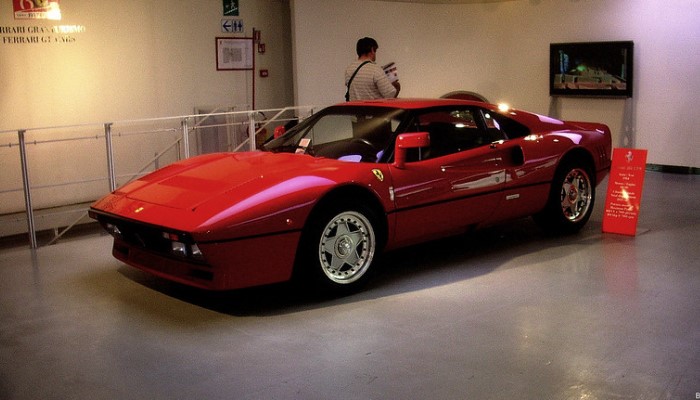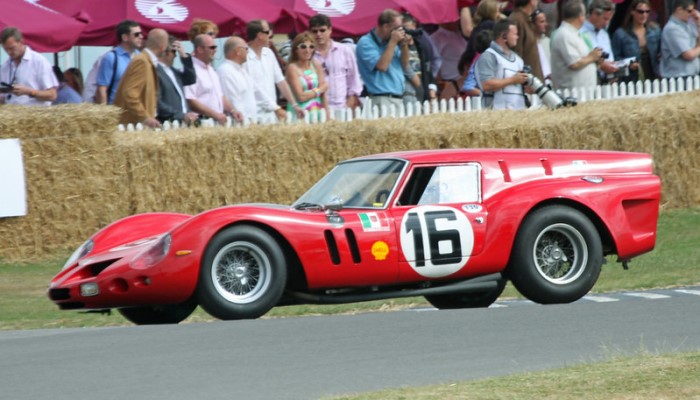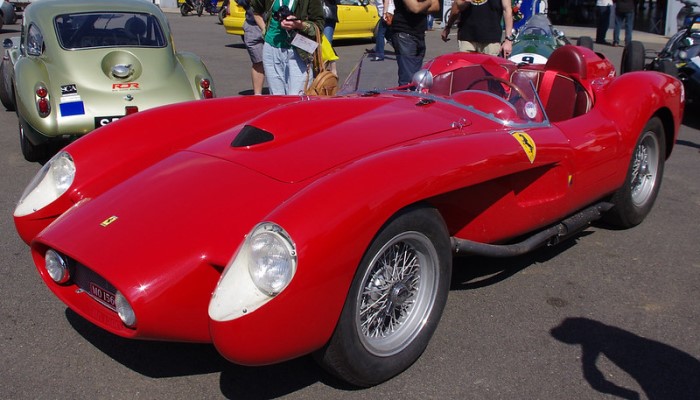Ferrari Dino 206/246 GT
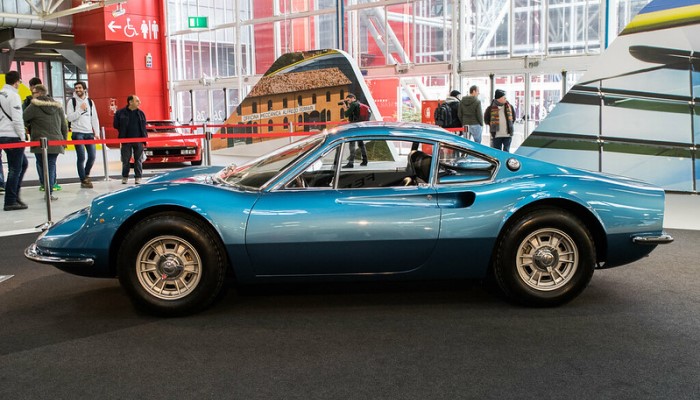
Photo: "Dino 246 GT" by Maurizio Cefariello
One of Ferrari's Most Questionable Cars
Why questionable? Well, many fans of this legendary brand do not even consider the Dino as a real Ferrari, which is strange when you know that it is one of the best-selling cars in the company's long history.
But when we take a closer look at the situation, the Dino during the first few years of production was not even officially a Ferrari at all...
Alfredo "Dino" Ferrari, Enzo's Weak Spot
According to many, Enzo was a difficult person to work with. In addition to having a high opinion of himself, Enzo also had a ferocious temper and was often known to start fights. But he also had his "weak" spot, and it related to his son Alfredo, for which Enzo personally retired from motor sports.
Among his friends Alfredo was known as Dino and Enzo saw him as the only possible successor to his empire. Enzo let Dino work on a brand-new V6 engine, but unfortunately Dino did not live to see his work and passed away on June 30, 1956, at the age of 24. Diagnosis, Duchenne muscular dystrophy (DMD).
Development of the Dino V6 Engine
His untimely death threw Enzo into a depression that would last for years, but work on the V6 engine continued. It made its debut at the Napoli Grand Prix in April 1957 when a car powered by that engine finished in an excellent third position.
Although the engine was initially small (1.5L), it was later increased to 2.4L for Formula 1, and would be used in the first racing Ferrari with a centrally mounted engine, the 246 SP from 1961.
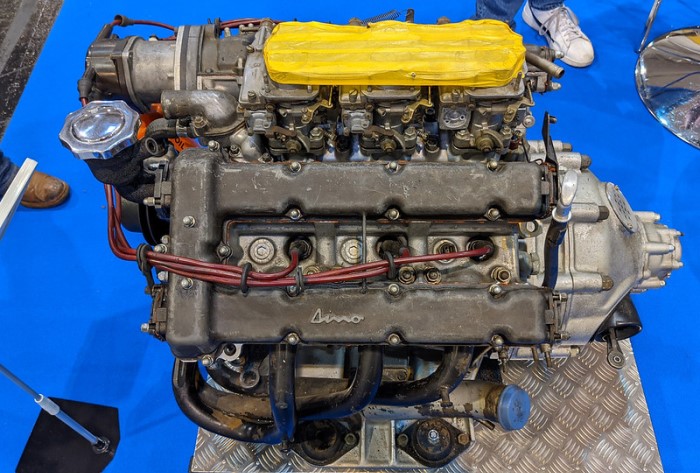
Photo: "Dino engine, also used in the Lancia Stratos" by Triple-green
The period of the 1960s brought great changes in motor sports, so companies switched from front-mounted engines to centrally mounted engines. In this way, the stability was significantly higher and the weight would be evenly distributed.
Although Ferrari began competing with such cars as early as 1961, Enzo still did not consider them ideal for street use, although his engineers and close friend Sergio Pininfarina convinced him otherwise. Judging by Pininfarina, Enzo considered such cars too dangerous for the street, and with good reason.
In fact, in 1957 at the Mille Miglia, Ferrari driver Count Alfonso de Portago lost control of the vehicle and ran into the crowd. Ten spectators died, five of them children, and after four years of trial, Enzo was declared one of the culprits.
FIA Homologation
According to many people, Enzo was not interested in street cars at all and he only produced them to be able to increase the racing budget. An additional reason was homologation, because of which it was necessary to produce a certain number of serial copies in order for it to be able to compete at all.
Although Enzo often avoided such contests, sometimes he simply had no other choice. By the mid-1960s, the FIA had passed a new rule for the 1967 Formula 2 season.
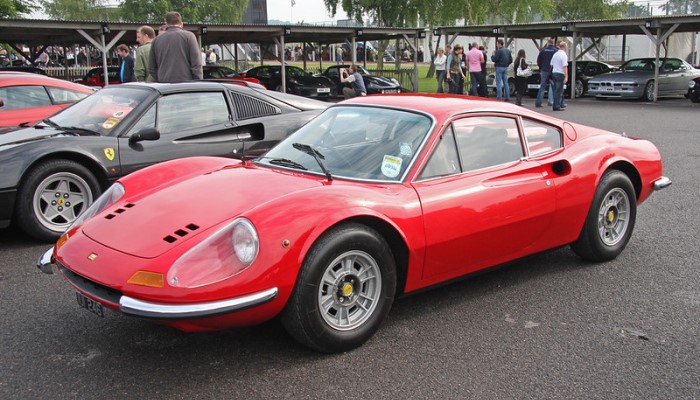
Photo: "Ferrari Dino" by exfordy
In order for a car to qualify for this competition, it was necessary to produce a minimum of 500 series engines powering such cars. This information was a big problem for Ferrari, whose serial production was always measured in tens, not hundreds.
Deal with Fiat
In late 1964, Enzo met with Fiat president Gianni Agnelli to discuss mass production of the Dino V6 engine. This was not the first time that Enzo tried something like that and as early as 1960 he was looking for an associate for the serial production of a small 850cc engine, and the choice eventually fell on ASA, which produced a certain number of examples under the ASA 1000 GT designation.
In any case, the Dino V6 engine was to be installed in the new Fiat sports car as well as the new Ferrari which would become the company's first mid-engine production model, and both cars were to carry the Dino badge.
Additional Problem for Enzo - Lamborghini Miura
There was one additional problem for Enzo, and that was the Lamborghini. Although the company was powerful enough to leave any rival behind, both on the track and on the street, Lamborghini announced its first model with a mid-engined Miura and the Enzo simply could not be outdone.
Building cars under the Dino label gave Enzo another advantage - he could continue to compete in motorsport without acknowledging that Ferrari had changed the way it did business.
Design, Specifications and Performance
The first Ferrari Dino was designed by Pininfarina and was ready for the Paris Motor Show at the end of 1965. However, due to production problems, the model was only ready two years later for the Turin Motor Show, while sales started in 1968.
Fortunately for Enzo, the Fiat Dino Spider, also designed by Pininfarina, went on sale in 1966 while the larger four-passenger Fiat Dino Coupe, designed by Bertone, debuted in 1967. Both models were popular enough to qualify the V6 engine for motorsport, so Fiat sold 7,651 Dinos from 1967 to 1972.
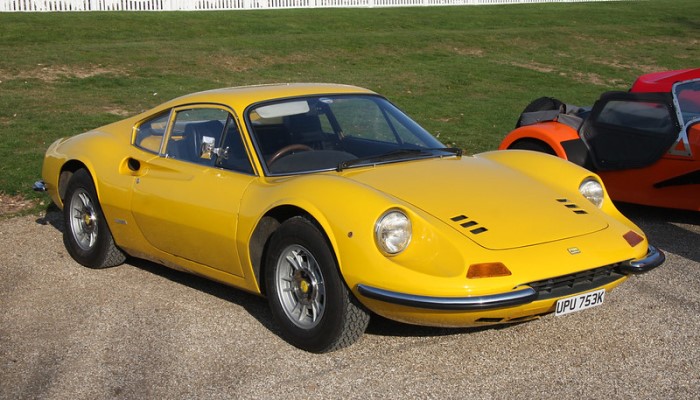
Photo: "Ferrari Dino" by exfordy
The Ferrari Dino 206 GT used the same 2.0L V6 engine as the Fiat, but its output was increased from 160 to 180 hp. This engine proved to be quite problematic for street use and had a number of problems, so in 1969 it was replaced by a more modern 2.4L engine, which increased the power to 180 hp for Fiat and 195 hp for Ferrari, which also received a new name, Dino 246 GT.
Although it was cheaper than most Ferraris, the Dino 246 GT was certainly not a cheap car and with a starting price of $14,000 it was more than double the price of even the most powerful Porsche 911. On the other hand, the price was still affordable, especially when you know that Ferrari 365 GTB4 Daytona cost up to $20,000.
The Dino is also a fast car, with acceleration to 100 kph (62 mph) in 7 seconds and a top speed of 240 kph (149 mph). It is also a beautiful car, and by 1974 as many as 3,700 examples had been sold, making it the company's best-selling model in history at that time.
Dino Like a Movie Star
Regardless of whether you belong to the group of those who say that the Dino is not a Ferrari, or you belong to those who say that it is a "pure-blooded" Ferrari, one thing is certain... This car is a true beauty!
Proof of beauty and power lies in numerous appearances in movies and TV series. In the video below you can enjoy the scenes of some movies in which this beauty dominates.
Indeed, we can say that this car is one of the favorites in the world of cinematography.
Ferrari Dino in Today's Market
Although many claimed that the Dino 206/246 GT is not a real Ferrari, today it is a highly valued and expensive classic, and the GTS roadster attracts special attention.
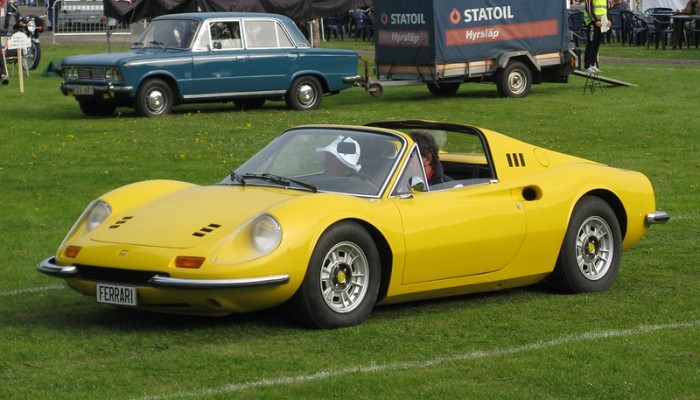
Photo: "Ferrari Dino 246 GTS" by nakhon100
In the graph below, you will notice the constant growth of the average price in the last five years, which means that the 246 GTS is a good investment. The price ranges between $250,000 and $1M.
As for the 206 GT, it is very rare and hard to find on the market. Since it is so rare, its price is higher. It ranges between $300,000 and $850,000.
Unlike the 206 GT, the 246 GT has a stronger offer and a slightly lower average price. You will have to spend between $200,000 and $650,000 for this model.
So, if you have the desire to own such a beauty, be prepared to shell out a lot of money... Still, it's a Ferrari.

Unique Car Zone Team
A group of several fans of everything that moves on four wheels, a few article creators, a couple of marketing strategists, designers, web developers, and lots of coffee.




